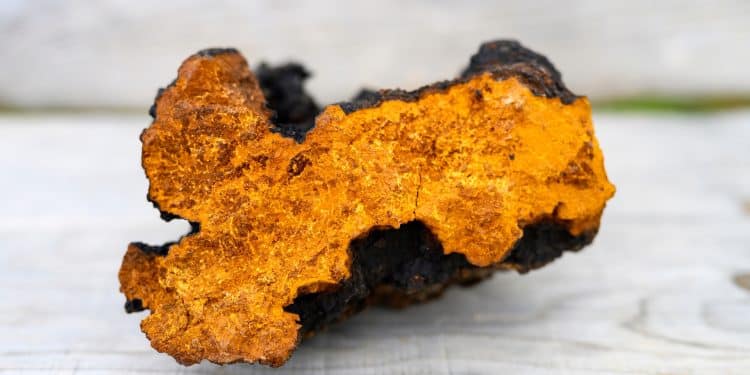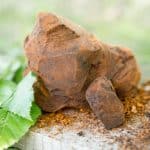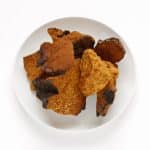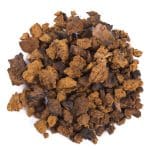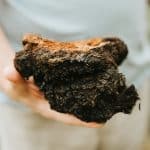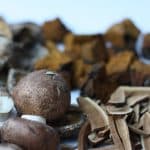We must begin with the statement that properly dried chaga needs to be made into a drink, it cannot be consumed as a powder and should be used for tea. That’s due to the compounds in chaga needing to be extracted to be made bioavailable. Which does not happen when eaten.
So Does Chaga Mushroom Go Bad?
Like most teas, dried Chaga powder, if it is not stored correctly, will expire and lose its potency. You do not want to store your Chaga for a long period of time in anything plastic, because this will speed up any potential mold growth. Storing chaga is important, as you can prolong Chaga’s shelf life for an incredibly long time when it is stored correctly.
There are various methods of storing and using chaga, and each one may have different shelf lives. If you would rather make it fresh and then store it, then a different method of storing your chaga tea could be frozen ice cubes. Although this idea may not be as practical, but it may be one of the better ways for storing long term that keeps your chaga fresh.
To make storing and using it in the future even easier, you can grind the chunks of chaga down into a fine powder that you can use for making chaga tea, and it is easily stored in your kitchen cupboard. Freeze the fresh-brewed tea into ice cube trays for days when you do not have time to brew the tea. Naturally, ice cubes can be added to smoothies and frozen drinks to create that special, fun beverage.
You can store a jar of chaga tea left overs in a refrigerator and they will remain fresh for up to three days. Chaga tea can be consumed immediately, or you can store it for 48 hours in a glass Kilner/airtight mason jar in the refrigerator (or in a cool, dry area). You can increase the quantity of Chaga tea that you consume each day as you go along, but the best is to consume no more than three cups per day. This might sound insignificant, but it is important to know how long a chaga tea will last if you are not planning on drinking it regularly, but want to purchase large quantities to receive discounts, so that you can plan accordingly.
If you are buying a product with chaga in it, you can rest assured knowing that use-by dates are the most reliable way of knowing whether the chaga is still fresh. Treat both dried chaga and brewed chaga tea as you would any other food; just like leftovers in your refrigerator, it is only a matter of time until they start spoiling. Make sure you keep your brewed chaga in the freezer to prevent it from getting moldy.
If your chaga tea tastes extremely bitter, muddy, or just gross, then it is likely contaminated with mold, or just low-quality due to age, and should not be consumed anymore. Many people might assume, wrongly, that because chaga is such a dark, robust mushroom, its tea will have quite strong, bitter, and unpleasant flavors, like a lot of natural plant remedies. Like most conkers, or shelf mushrooms, which grow on trees, chaga is much too hard and woody to be used in regular cooking recipes.
Chaga harvested from the wild contains significant amounts of humidity and water, which significantly decreases a chagas shelf life, allowing moulds to grow, rendering chaga inedible. It is the moisture in chaga that causes problems when it is improperly processed and stored. Remember, chaga tea made with improperly stored chunks of chaga, or powder, is most likely to result in health problems due to mold and rot.
How to Keep Chaga Fresh
The best suppliers produce and process their chaga products from the highest-quality sources. Look for companies that have decades of experience, as well as willingness to preserve only the useful, nourishing elements of chaga. Chaga Mushrooms can be stored in sealed containers, while chaga tea made by steeping it, may be stored in a fridge for around 10 days.
